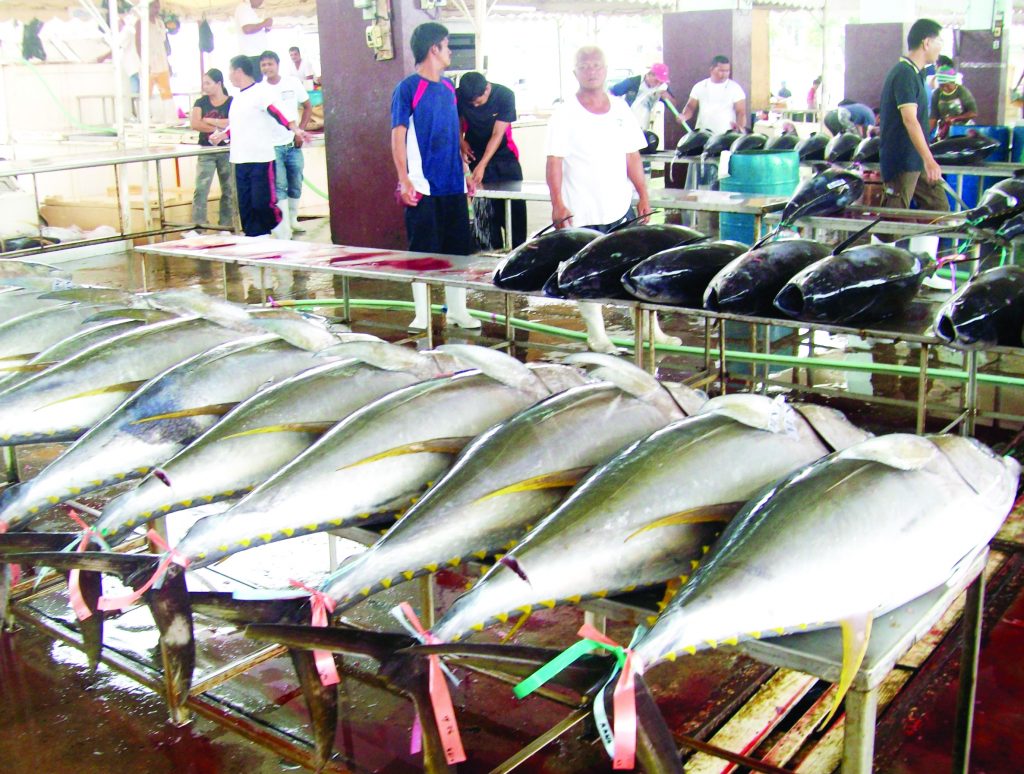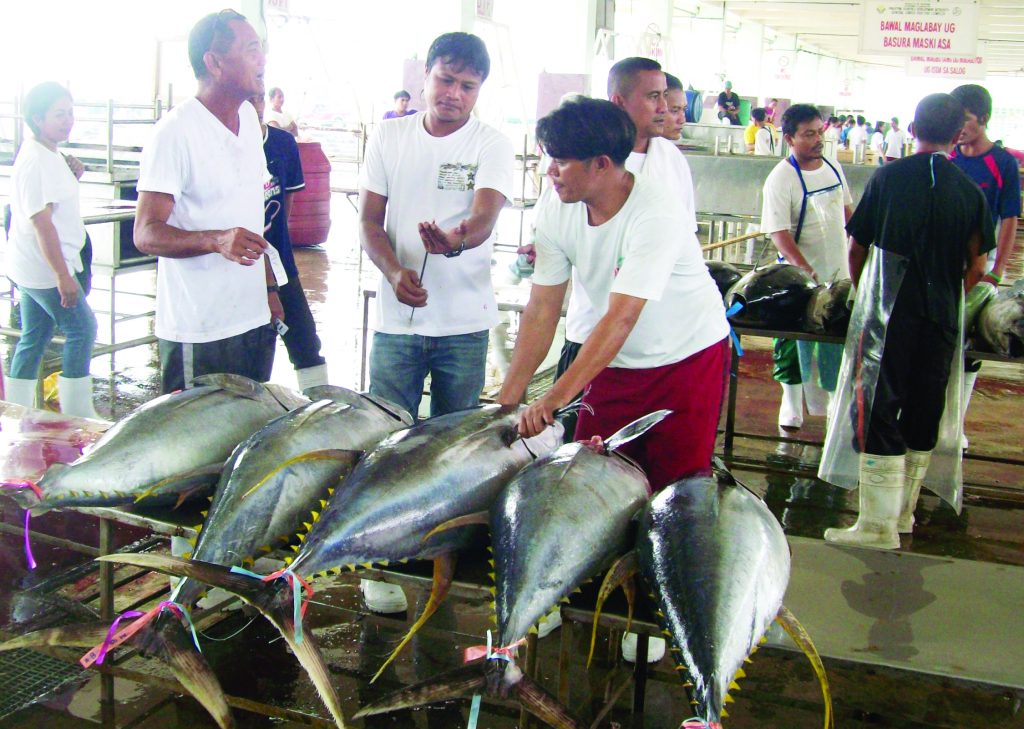Tunas are migratory oceanic fishes, which are capable of attaining large sizes. Unlike most fish, which have white flesh, tuna flesh is pink to dark red, which could explain their odd nickname, “rose of the sea.”

According to health experts, tuna meat is rich in omega-3 (polyunsaturated) fatty acids that build up high-density lipids or “good cholesterol.” Consuming tuna is said to be effective in preventing heart attacks.
“Tunas are widely but sparsely distributed throughout the world, generally in tropical and temperate waters between about 45 degrees north and south of the equator,” says the International Seafood Sustainability Foundation, which compiled a detailed scientific report on the state of global tuna stocks.
In the Philippines, twenty-one species of tunas have been recorded. “But only six species are commercially important,” says Dr. Rafael D. Guerrero III, a national scientist and former head of the Philippine Council for Marine and Aquatic Research and Development.
Among the shallow-water/small tunas, the most commercial important are the frigate tuna (locally known as “tulingan”), the eastern little tuna (“kawa-kawa”), and the bullet tuna. Most of these tunas are consumed locally.
The important species among the deep-water/big tunas are the yellowfin tuna (“albacora”), the big-eye tuna (“tambakol”), and the skipjack (“gulyasan”). These are caught using commercial fishing boats with purse seines and ring nets.
“Tunas are caught throughout Philippine waters,” says Dr. Guerrero, “but the most productive fishing grounds are the Sulu Sea, Moro Gulf and waters extending to the North Celebes Sea. Viable tuna fisheries also exist in waters off Western Negros, as well as Northwestern and Southern Luzon.”

The Philippines is the second largest tuna exporter – after Indonesia. “Tuna is by far the largest seafood export commodity of the Philippines in terms of value and offers a livelihood to thousands of fishermen,” reports the Seafood Sourcing and Investment Intelligence (SSII), a global website portal which provide information to those who want to engage business in the aquaculture and fisheries sector.
In 2010, the country shipped 106,449 metric tons of prime-grade yellowfin, skipjack, and other forms of tuna to the United States, United Kingdom and Germany, according to the Worldwide Fund for Nature (WWF) Philippines.
At that time, “about 52% of the country’s fish exports come from tuna, which are still abundant in Mindoro, Ilocos Norte, Negros and Sarangani,” wrote Gregg Yan in an article featured in the website of The Coral Triangle.
The Coral Triangle is a six-million kilometer expanse which covers the waters of the Philippines, Indonesia, Malaysia, East Timor, Papua New Guinea and the Solomon Islands. The region generates 40% of the Western Central Pacific’s total tuna catch.
But the tuna industry is not as rosy as before in the Philippines. “Landing figures from 2012 to 2016 start out with a slightly increasing trend which can be mainly attributed to increased fishing efforts. From 2015 onward numbers are decreasing,” SSII reports.
“Although fishing effort is likely to be further increased in coming years, it is expected that landing figures will maintain stable or decrease further as the stocks are still not properly managed and Philippine boats are restricted from Indonesian waters,” it adds.
Some years ago, the Philippines was granted a GSP+ status, which resulted in a 0% import tariff on tuna products destined for European Union. “Without this status, tuna products from the Philippines were not able to compete with more price competitive products from Thailand, Vietnam, Maldives and Sri Lanka,” SSII notes.
As of August 2016, the Philippines is the largest supplier of fresh yellowfin tuna products to the European Union. Italy and Spain are also importing the largest quantities. Japan, as the world’s largest sashimi market, is another big buyer of tuna from the Philippines; it imports mostly high-grade fresh tuna products.
The market may be bullish but the production is not. Most of the tunas delivered to General Santos City, touted to be the “tuna capital of the Philippines,” are caught at Sarangani Bay. Recent reports that bay is “largely fished out,” as are most of the surrounding waters in the Mindanao Sea.
“Several tuna species (caught in the Philippines waters) are in peril,” Jonathan Watts writes for The Guardian, a daily publishing in United Kingdom. “Bluefin are critically endangered with just 2% of their 1950 biomass left, bigeye recently fell below the 20% level necessary for replacement, and yellowfin are also down more than 70%.”
In fact, the Switzerland-based International Union for Conservation of Nature (IUCN) listed the yellowfin tuna as “near threatened” as “their population is declining due to overfishing to meet human demands.”
Five years ago, the Philippines was given a “Yellow Card” rating by the European Commission as the country was “unable to sufficiently manage illegal, unreported and unregulated fishing.”
Because of the rating, the government passed a stricter fishing law. “But there is still no harvesting strategy and illegal and unregulated fishing remains commonplace,” reports Watts, who personally came to General Santos City to gather his data.
During his visit, Watts saw young yellowfin and bigeye tunas – “none more than 50 centimeters long” – on the conveyor belts from ships into General Santos City.
“There is a lot of illegal fishing in General Santos,” Vince Cinches, Philippine oceans campaigner for Greenpeace Southeast Asia, told Watts. “They are taking out a generation of tuna.”
Something must be done before it’s too late. “Unless we closely manage and protect remaining populations, our tuna industry might collapse,” warns Joel Palma, the conservation program vice president for WWF-Philippines. (To be continued)






